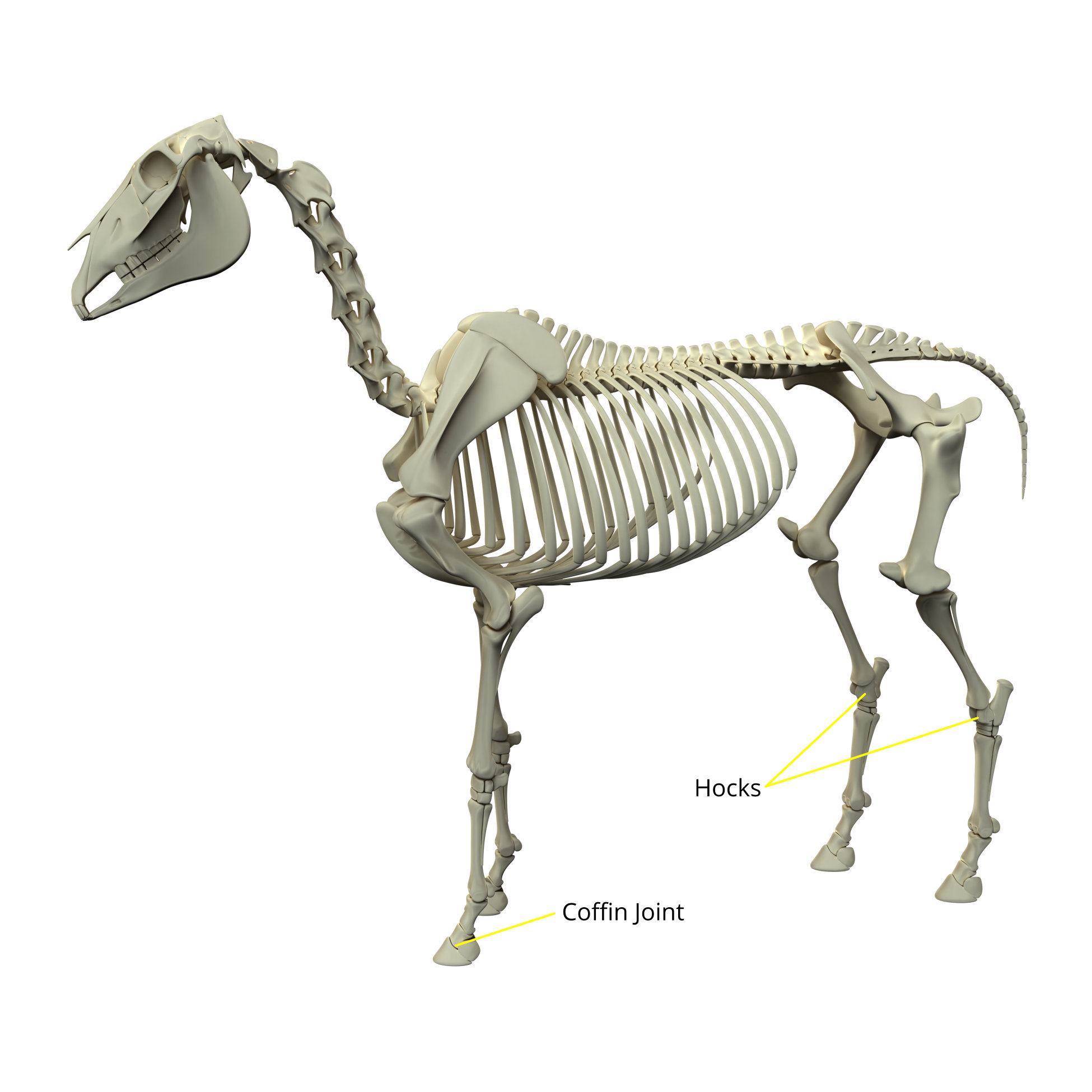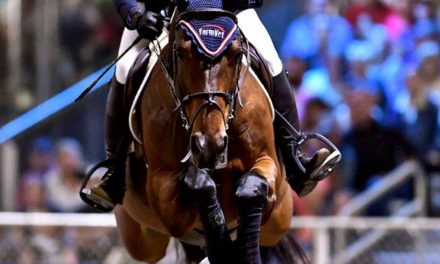Should I Give My Horse Joint Injections? Video
Joe Rosenberg, DVM discusses joint injections for show jumping horses. In this episode the horse receives injections in his coffin joints and hocks.
Hocks are joints located between the tarsal and tibia bones.
Coffin joints are located at the bottom most bone in the horses leg (the coffin bone pedal bone) and is encased by the hoof capsule.
How do I know if my horse needs injections?
Usually involves the trainer, rider and veterinarian. If your horse is not performing normally. If your horse is showing signs of pain in those areas. You should consult an equine veterinarian who can help assess if there is a lameness problem and isolate the issue to the joints. This process typically included flexion tests.
What is the injection process?
The horse is sedated but able to stand comfortably. The skin is sterilized over all areas to be injected. This surgical prep, using strong antiseptic with a long contact time, helps to minimize the opportunity for bacterial infection. A needle is inserted into the joint to ensure it’s positioned correctly. This is followed by the injection. The horse receives a dressing over the injected joints to help keep them clean.
What substances are contained in horse injections?
- An antibiotic in case there is any bacteria present.
- A long-acting corticosteroid that helps to calm down the process of inflammation and arthritis.
- Hyaluronic acid that feeds the joint capsule and helps to produce healthy joint fluid.
What is the recovery process?
Involves about seven days of rest. The horse is given a nonsteroidal anti-inflammatory drug (NSAID) such as phenylbutazone, banamine or equioxx which is similar to ibuprofen. This is followed by 15 minutes of hand walking for 3-4 days followed by 3-4 days of tack walking for 15 minutes.
How often should I give my horse injections.
Frequency depends on several factors including age, how hard the horse is worked, what kind of professional training is involved and frequency of use. On a maintenance level, generally about once a year. However, if your horse is requiring injections more frequently in order to perform, it’s probably time to find a new discipline for your horse.
Joe Rosenberg, DVM is the principal veterinarian at Paniolo Equine Veterinarian Services, in San Diego County, California. Learn more at their website.





